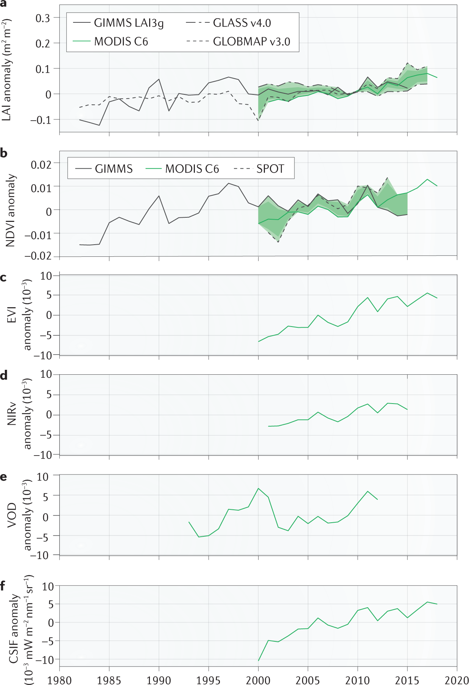Nature Reviews Earth & Environment ( IF 49.7 ) Pub Date : 2019-12-09 , DOI: 10.1038/s43017-019-0001-x Shilong Piao , Xuhui Wang , Taejin Park , Chi Chen , Xu Lian , Yue He , Jarle W. Bjerke , Anping Chen , Philippe Ciais , Hans Tømmervik , Ramakrishna R. Nemani , Ranga B. Myneni

|
Vegetation greenness has been increasing globally since at least 1981, when satellite technology enabled large-scale vegetation monitoring. The greening phenomenon, together with warming, sea-level rise and sea-ice decline, represents highly credible evidence of anthropogenic climate change. In this Review, we examine the detection of the greening signal, its causes and its consequences. Greening is pronounced over intensively farmed or afforested areas, such as in China and India, reflecting human activities. However, strong greening also occurs in biomes with low human footprint, such as the Arctic, where global change drivers play a dominant role. Vegetation models suggest that CO2 fertilization is the main driver of greening on the global scale, with other factors being notable at the regional scale. Modelling indicates that greening could mitigate global warming by increasing the carbon sink on land and altering biogeophysical processes, mainly evaporative cooling. Coupling high temporal and fine spatial resolution remote-sensing observations with ground measurements, increasing sampling in the tropics and Arctic, and modelling Earth systems in more detail will further our insights into the greening of Earth.











































 京公网安备 11010802027423号
京公网安备 11010802027423号